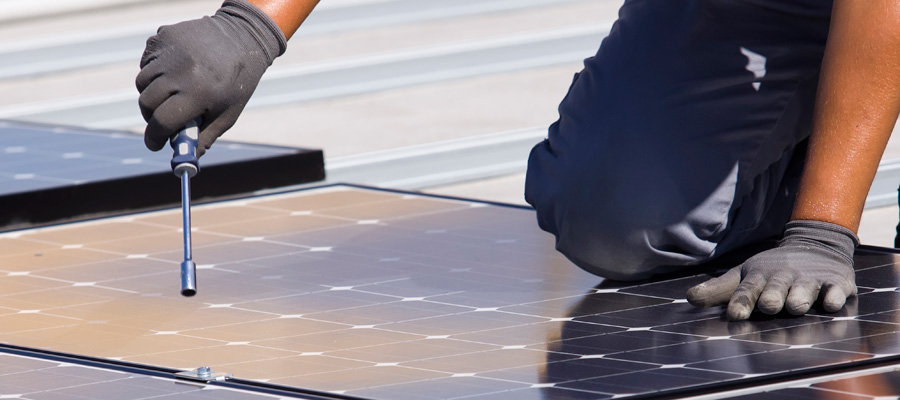Goin’ slow: BC Budget fails to make meaningful investments in climate action

The BC government’s new climate plan, CleanBC, was released in December 2018 to great fanfare. The plan, as we noted back then, is progress after many years of stalling and pretend climate leadership, but is still a work in progress. The government’s widely repeated claim that CleanBC gets 75% of the way to BC’s 2030 GHG reduction target—a drop of 40% relative to 2007 levels—is not substantiated in the document. Many of the initiatives are targets, set well into the future, for low-emission buildings and vehicles while industry largely got a pass.
Missing from CleanBC was a sense of financial commitment to back up the lofty rhetoric. For that, we were told to wait for the 2019 BC Budget. Alas, the Budget disappoints by committing very little relative to the need for major economy-wide investments.
What the Budget does include
The Budget increases the BC carbon tax for the second consecutive year. It went from $30 per tonne to $35 as of April 2018 and will be $40 in April 2019, which translates to 8.9 cents per litre at the gas pump. Two more annual increases are scheduled, meaning BC will hit the $50 per tonne minimum national carbon price a year earlier than mandated by the federal government.
In 2019/20 carbon tax revenue will be more than $1.7 billion, and it will rise to $2 billion and $2.2 billion in the following two fiscal years respectively. If this revenue was to be invested in climate action initiatives, BC could really move the needle on GHG emission reductions. The previous government’s policy of “revenue neutrality”—in which all carbon tax revenues flow right back out the door as other tax cuts or credits—has (rightly) been removed, so carbon tax revenues can now be used to fund climate action. Yet, climate expenditures in the Budget fall far short of the amounts raised by the carbon tax.
The headline number of $902 million in climate expenditures looks good on the surface—almost a billion dollars!—but remember it is a three-year total. As an investment into climate action it represents a mere 0.1% of BC’s $300 billion GDP.
In the landmark Stern Review of the Economics of Climate Change (a 2006 report to the UK government), former World Bank Chief Economist Nicholas Stern recommended that governments invest 1% of their GDP on climate measures. More than a decade later, after much kicking and screaming, BC will spend one-tenth of that amount.
The BC Budget, like CleanBC, is too slow a move in the right direction. In future budgets we need to see a much stronger commitment from the government to invest in reducing emissions.
Even that number overstates BC’s commitment. One-quarter ($223 million) of the $902 million commitment is for an enhanced Climate Action Tax Credit, a credit aimed at low-income households. This is an important and necessary measure to compensate for the regressive nature of carbon taxes (i.e., that low-income households will pay a greater share of their income to the tax than higher-income households). But that cannot be counted as climate action.
Of the remaining $679 million, almost half ($299 million) is “contingencies funding” allocated to “programming under development.” That leaves $354 million in operating and $26 million in capital expenditures in the three-year plan. This money goes to buildings, transportation and industry, so let’s take a look.
Transportation: No new commitments for transit
In transportation, I’ve long feared that too much attention will be placed on shifting to electric vehicles and not enough on investments in public transit and land-use planning to create more complete communities. And this appears to be the case.
Metro Vancouver needs a pipeline of major transit investments over the next two to three decades, but there is no new commitment in the Budget. The BC government seems content to wait for federal-provincial-regional cost-sharing to emerge for new projects, even as it funds 100% of the new Pattullo Bridge for car commuters. The Millennium Line was also 100% provincially funded, so there is already a precedent for a bolder commitment to build out zero-carbon transit networks.
Instead, the big ticket item is $42 million in new funding for BC’s vehicle incentive program that began in 2011, and which provides rebates for purchasing a low- to zero-emission vehicle (see list here). The problem with such programs is that revenues go to affluent households who can afford to buy a new car, most of whom would have purchased a low-emission vehicle anyway. It’s called the “free rider” problem, and this is not a good use of public money.
Buildings: Small improvements, but bold action lacking
For buildings, the Budget expands the incentives available for equipment and building envelope improvements under the new Efficiency BC program ($41 million over three years). Missing in action, however, is the commitment in the CleanBC document for $400 million of energy performance improvements in BC’s social housing stock.
The Budget also funds ($14 million in operating and $26 million in capital funding) energy improvements in government buildings.
Industry’s carbon tax refund
Industry gets $168 million in funding, which is a return of the incremental carbon tax paid by industry—that is, the portion above $30 per tonne that prevailed up until March 31, 2018. For 2019/20, the carbon tax is $40 per tonne, so $10 per tonne paid by industry goes back to industry in two forms. First, the companies that meet a greenhouse gas (GHG) intensity benchmark will get that incremental carbon tax back as a refund. Second, the remaining funds will be available for emission-reduction projects for industry.
Carbon taxes were supposed to ripple through the economy, changing incentives and driving emission reductions. But the government is now taking carbon tax revenues and ploughing them back into industry.
As an aside, this is a stunning rebuke of carbon pricing in BC. Carbon taxes were supposed to ripple through the economy, changing incentives and driving emission reductions by “putting a price on carbon.” Perhaps because the carbon tax is too low to drive real change, or because of the political clout of industry, the government is now taking carbon tax revenues and ploughing them back into industry.
Industry accounts for 60% of BC’s GHG emissions, and it is unclear what kind of impact this recycling of carbon taxes back to industry will have. The government claims it will lower emissions by 2.5 million tonnes in 2030 but it has not shown its math on this point.
Other Budget commitments
The Budget commitment I like the most is $15 million towards reducing diesel consumption in remote communities, which includes many First Nations communities. This has been discussed a lot over the past decade but little progress has been made.
Additionally, the 2019 Budget includes a small increase to fight forest fires. This is much needed: we must adapt to climate change and this must be reflected in the budget. Past budgets have allocated a mere $64 million to fight fires, while actual costs have exceeded that budget by a wide margin—BC has spent more than $1 billion over the past two years fighting fires. The 2019 BC Budget increases the line item to $101 million, but I’m betting BC will once again draw heavily on contingencies when fire season comes around again.
**
All of this is to say that the BC Budget, like CleanBC, is too slow a move in the right direction. In future budgets we need to see a much stronger commitment from the BC government to invest in reducing our emissions. BC is a wealthy jurisdiction with abundant hydropower and other impressive geological, physical and human assets. If BC wants to really be a climate leader, it needs to put its money where its mouth is.
Topics: Climate change & energy policy, Provincial budget & finance



